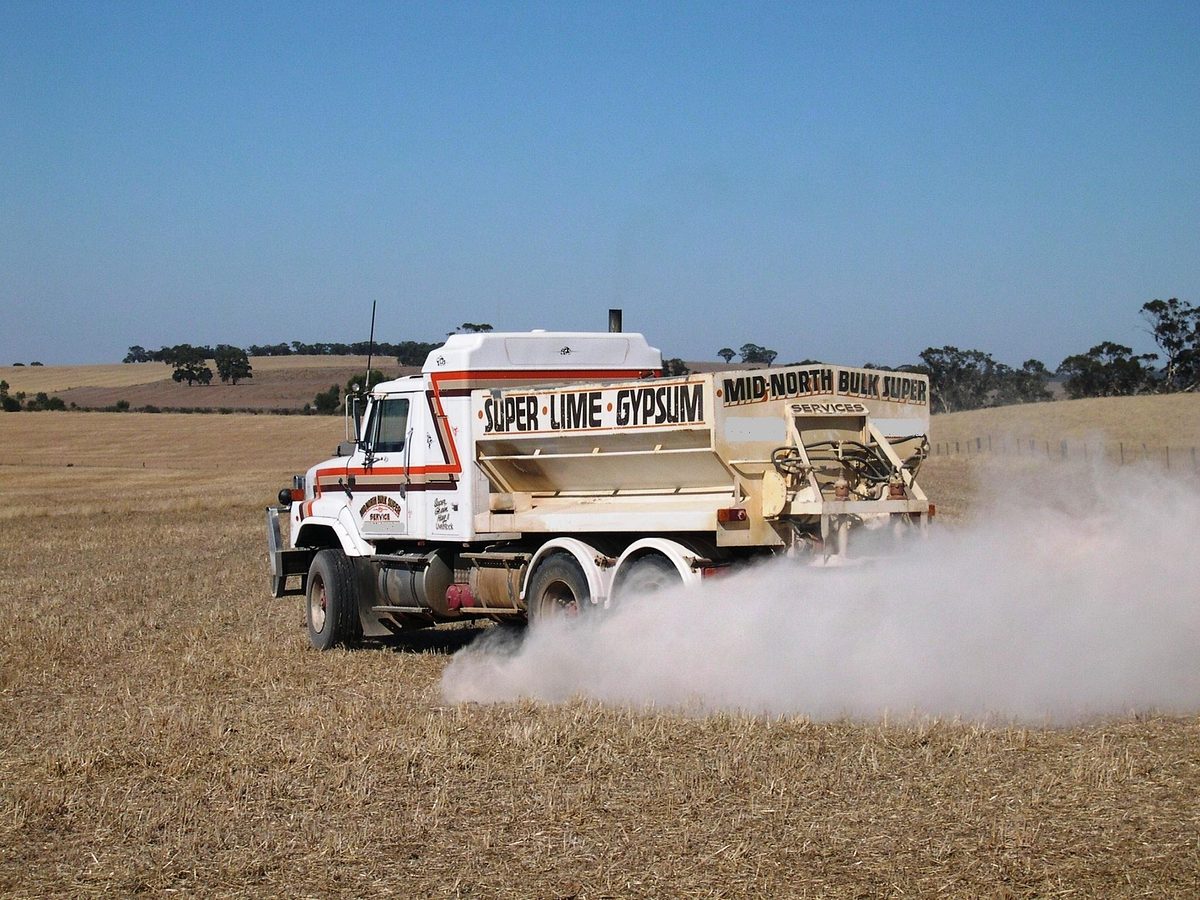Soil acidity - Management of risk
Soil acidity can be corrected with lime. Overall, lime application rates on agricultural land have been below the estimated lime requirement to balance annual acidification prior to 2018. From 1999 to 2016, lime use was within the range of about 75,000 to 140,000 tonnes. Since 2016, annual lime use has tripled to over 300,000 tonnes in 2022, which is higher than the current lime requirement of about 200,000 tonnes per year.
However, more lime than this annual requirement needs to be applied to currently acidic soils to raise the pH to a fully productive level. This ‘catch-up’ lime requirement is estimated to be about 2.65 million tonnes.
At the property scale, in areas that are potentially acidifying, regular paddock soil pH testing and liming is needed to ensure optimum crop and pasture production, and stop increasing sub-surface acidification. Spatial paddock pH mapping and variable rate lime application can give the most cost-efficient treatment and management of soil acidity.
Acidity can also be ameliorated by incorporation of calcareous or alkaline clay or by use of alkaline irrigation water. The use of deeper rooted perennial plants and effective management of soil nitrogen can reduce the rate of acidification.
Future challenges
Soil acidification will continue to increase unless the level of remedial action is significantly improved.
Soil acidification is becoming an increasing issue in cropping districts due to high levels of production and increased use of nitrogenous fertilisers. In recent years it has been confirmed that the extent of acid soils in cropping areas is expanding, particularly on sandier, non-calcareous soil types. Sub-surface (below 10 cm depth) acidity is more widespread than previously recognised, and is a significant issue in the Mt Lofty Ranges, Kangaroo Island and South East.
DEW is working in partnership with industry groups, PIRSA and Landscape boards, to develop and deliver programs and projects to:
- Improve land manager understanding and awareness of soil acidity, its causes and treatment options
- Conduct soil pH testing (including spatial paddock pH mapping) and lime application trials in districts suspected or confirmed to have newly emerging soil acidity
- Re-test previous monitoring sites
- Test additional sites to assess the extent of surface, subsurface acidity and stratification.
An improved understanding of the rate of topsoil and subsoil acidification under various land uses and land management systems and soil types is required. In addition, a better understanding of the impacts and treatment of soil acidity, especially in the sub-soil, are required, as well as programs that increase the recognition and management of acidity by land managers.
Find out more:
- Trend and Condition report cards: Soil Acidity
- Assessing Agricultural Land
- Soil Acidity factsheet
- Soil Acidity map
- Soil acidity and lime use in SA June 2023
- Acid Soils SA website



